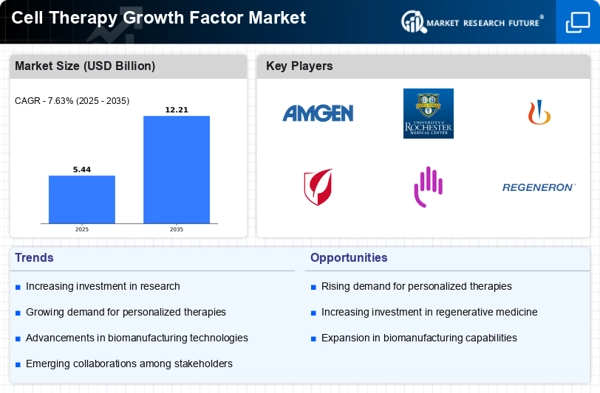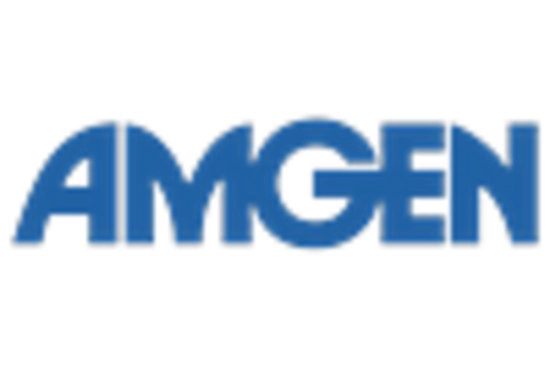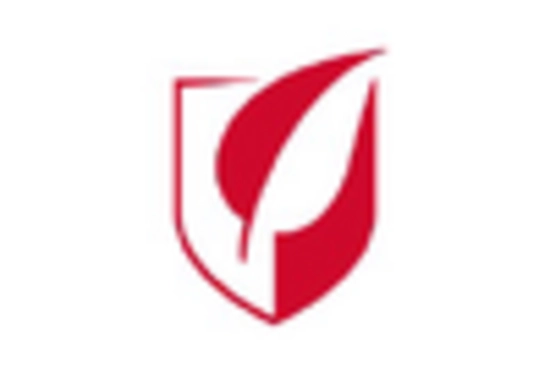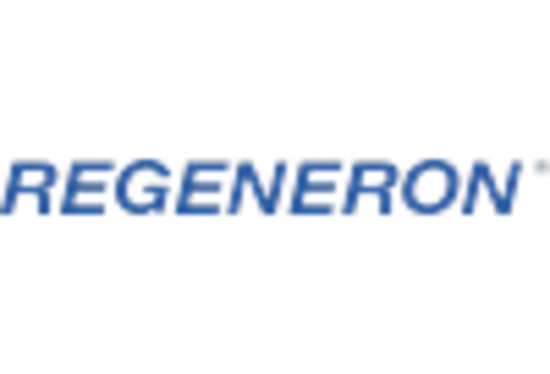Advancements in Biotechnology
Technological advancements in biotechnology are significantly influencing the Cell Therapy Growth Factor Market. Innovations in gene editing, stem cell research, and biomanufacturing processes are enhancing the efficacy and safety of cell therapies. For instance, the development of CRISPR technology has opened new avenues for precise genetic modifications, which can improve the therapeutic potential of growth factors in cell therapies. The market for biotechnology is projected to reach substantial figures, with estimates suggesting it could exceed USD 700 billion by 2025. This growth is likely to foster collaborations between biotech firms and research institutions, further driving the Cell Therapy Growth Factor Market. As these technologies evolve, they may lead to more personalized and effective treatment options, thereby attracting a broader patient base.
Increasing Prevalence of Chronic Diseases
The rising incidence of chronic diseases such as diabetes, cardiovascular disorders, and neurodegenerative conditions is a primary driver for the Cell Therapy Growth Factor Market. As these diseases become more prevalent, the demand for innovative treatment options intensifies. Cell therapy, particularly those utilizing growth factors, offers promising avenues for regeneration and repair of damaged tissues. According to recent estimates, chronic diseases account for approximately 70% of all deaths worldwide, underscoring the urgent need for effective therapies. This trend is likely to propel investments in research and development, thereby expanding the Cell Therapy Growth Factor Market. Furthermore, as healthcare systems seek to reduce the burden of chronic illnesses, the adoption of cell therapies is expected to accelerate, creating a robust market environment.
Rising Investment in Regenerative Medicine
Investment in regenerative medicine is witnessing a notable surge, which is a key driver for the Cell Therapy Growth Factor Market. Venture capital funding and government grants are increasingly directed towards research initiatives focused on cell therapies. Reports indicate that the regenerative medicine market could reach USD 100 billion by 2025, reflecting a growing recognition of the potential of cell therapies. This influx of capital is likely to accelerate the development of innovative growth factor therapies, enhancing their availability and accessibility. Additionally, as more clinical trials demonstrate the efficacy of these therapies, investor confidence is expected to grow, further propelling the Cell Therapy Growth Factor Market. The convergence of financial support and scientific advancement may lead to breakthroughs that redefine treatment paradigms in various medical fields.
Regulatory Support for Innovative Therapies
The evolving regulatory landscape is providing crucial support for the Cell Therapy Growth Factor Market. Regulatory agencies are increasingly recognizing the importance of expedited pathways for the approval of innovative therapies. Initiatives aimed at streamlining the approval process for cell therapies are likely to enhance market access and reduce time-to-market for new products. For instance, the introduction of breakthrough therapy designations has encouraged companies to invest in the development of growth factor-based cell therapies. As regulatory frameworks adapt to accommodate advancements in science, the Cell Therapy Growth Factor Market is expected to benefit from a more conducive environment for innovation. This regulatory support may lead to an influx of new therapies, ultimately improving patient outcomes and expanding treatment options.
Growing Awareness and Acceptance of Cell Therapies
The increasing awareness and acceptance of cell therapies among healthcare professionals and patients are driving the Cell Therapy Growth Factor Market. Educational initiatives and successful case studies are contributing to a more informed public perception of these therapies. As patients become more aware of the potential benefits of cell therapies, demand is likely to rise. Surveys indicate that a significant percentage of patients are willing to consider advanced therapies for chronic conditions, which could lead to a substantial market expansion. Furthermore, as healthcare providers become more familiar with the applications of growth factors in cell therapies, they may be more inclined to recommend these treatments. This shift in perception is expected to create a favorable environment for the Cell Therapy Growth Factor Market, fostering growth and innovation.

















Leave a Comment